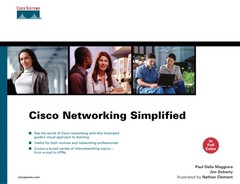Air-traffic controllers coordinate access to runways. Busy airports have more planes wanting to take off and land than runways available. Runways can only facilitate one plane at a time. In generic terms, the air-traffic controllers coordinate access to a limited resource (the runway).
Such is the purpose of content switches: coordinating access to limited resources, in this case, through load balancing. The primary example for content switching is the load balancing of HTML and XML traffic among multiple web servers.
The number of users needing to access a particular website might exceed the capacity of a single server. You could implement multiple servers to handle the increased load. However, because every device on a network requires a unique IP address, how does the user select which server to access? Some server farms (such as large Internet-based retailers) might require hundreds of servers to accommodate their online customers.
Content switches resolve this problem by transparently intercepting all traffic destined to a website and distributing each request to an available server. For example, when a user visits http://www.cisco.com, a load-balancing content switch can ensure that a server that is not overloaded handles the request. The user sees a single web server, www.cisco.com. But in reality, there might be tens or hundreds of servers.
Content switches can provide relief in the following situations:
Server load balancing—. As described earlier, a content switch can ensure proper load balancing across a group of servers transparently to the user.
Firewall load balancing—. As server farms increase in size, companies want to protect the systems from unauthorized access. They do so with firewalls. Content switches can enable load balancing across multiple firewalls.
Distributed data centers—. As the ultimate show of redundancy, some companies might choose to duplicate all network and computing services in a data center on an alternate site. Thus, if the original data center becomes unavailable, all services can continue on the alternate site. Although the implementation of distributed data centers requires careful planning and integration, content switches become the traffic cop during an accident. Any traffic destined to a data center transparently meets the content switch first. The content switch then redirects the traffic to the original data center, as usual, or to the alternate site if the original site disappears.


